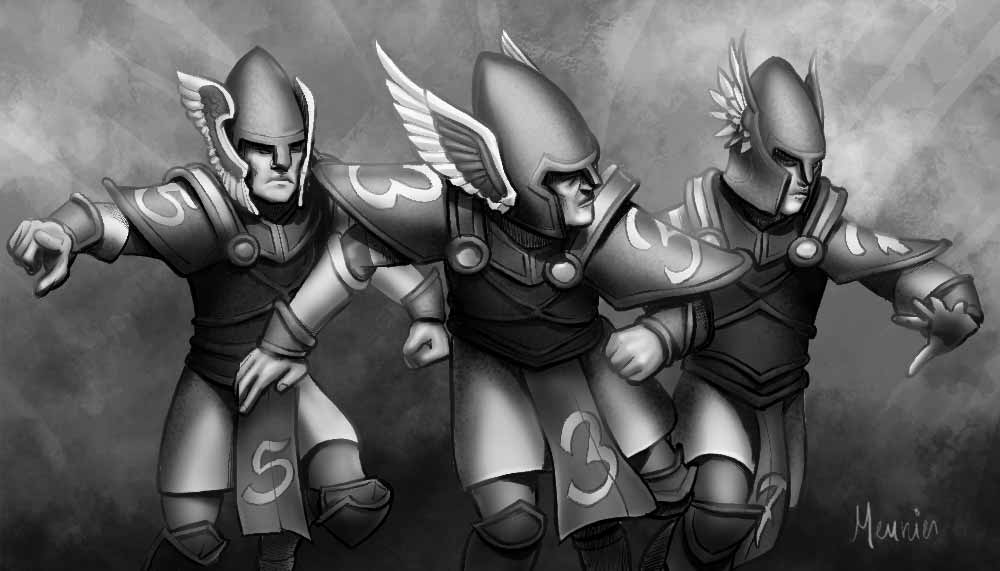Every Blood Bowl coach can only field a maximum of eleven non-stunty players in order to keep or gain possession of the ball. Obviously, eleven players are insufficient to lock down the pitch and deny opportunities to the opposing coach. This is why defensive efforts are often short-lived, unbalanced, and fragile. This is also why we all need to limit ourselves to offensive maneuvers as much as possible if we want to win our games.
Look Sharp, Be Sharp, Go Forward ! … and God Save the Queen !
OFFENCES
Since the dawn of time, we hear that a game of Blood Bowl is won on defense. This is absolutely true. However, it is by adhering to this axiom too vigorously that many coaches trip themselves up. If setting up a hermetic defense in front of a cage or making a fail-safe goal line stand can work if the stars align, it is usually better to use your defensive drive as a springboard to seize the initiative and try to go on offense. So, while there are certain exceptions that prove the rule, in general, the best defense is a good offense.
Being on offense means being in control of the drive
By default, the offensive role goes to the team receiving the kick-off because it is the team that maneuvers first. This default role is fragile given kick-off events and where the ball might land vis-à-vis how the receiving team’s players are positioned. Thus, each and every coach must play their first turn prudently given the risk that something goes wrong and suddenly finding themselves on the defense, which will drastically reduce a coach’s ability to control the drive.
The ideal moment to pull apart an opponent’s offensive drive is before the players get into their ideal positions. After that, it gets a lot harder.
Controlling the game requires committing one’s entire team. A team should never be 50% on offense: either you are on offense or you are not. That would be like fighting a war with half your troops – half head to the front to get slaughtered while the other half are powerless except to watch the carnage. Being in control mainly requires mobility and movement, without which you lose the ability to dictate the point of attack and put possession of the ball at risk. An immobile team is usually a team on the defensive, and soon enough on defense.
Conversely, a team facing a mobile offense controlling the point of attack and the level of engagement is very often ill-placed to hit back hard. That team is usually focused on containing the opposition’s offensive momentum. Thus, being on offense offers some of the best protection possible to your players. This extra protection, this control of the game and of the extent to which blocks get thrown, is why you should never be in a hurry to score, situation permitting.
Teams that struggle to survive or to develop usually spend far too long on defense.
Manoeuvres
The notion of exploiting the mobility of your team to unbalance your adversary is a strategy as old as Blood Bowl itself. Well-executed manoeuvres are a more effective way of securing a victory than simply sending out one’s players to get stuck into the opposition and beat them to death. Manoeuvres seek not only to strand the opposition’s key players in places where they cannot impact the play, but also to isolate as many opposition resources as possible and the leveraging of the opponent’s weaknesses.
The manoeuvres below are organized by level of coaching.
WARNING: The graphics below seek to transmit the core elements of the concept of manoeuvres. Any coach who positions their players exactly as presented would be in deep doo-doo!!!
Rookie Manoeuvre
The first offensive manoeuvre absorbed instinctively by rookies is to concentrate the majority of their players on one flank and to advance in a pack. This is the valiant mob manoeuvre that we often witness played within the boundaries of one single wide zone.
Imagine this simplistic scenario. Two teams of perfectly equal strength face off. Now, visualize the team on defence set up across the line of scrimmage. When presented with this defence, it seems entirely logical to try to shake up the opposition by concentrating the entirety of one’s players on a single flank.
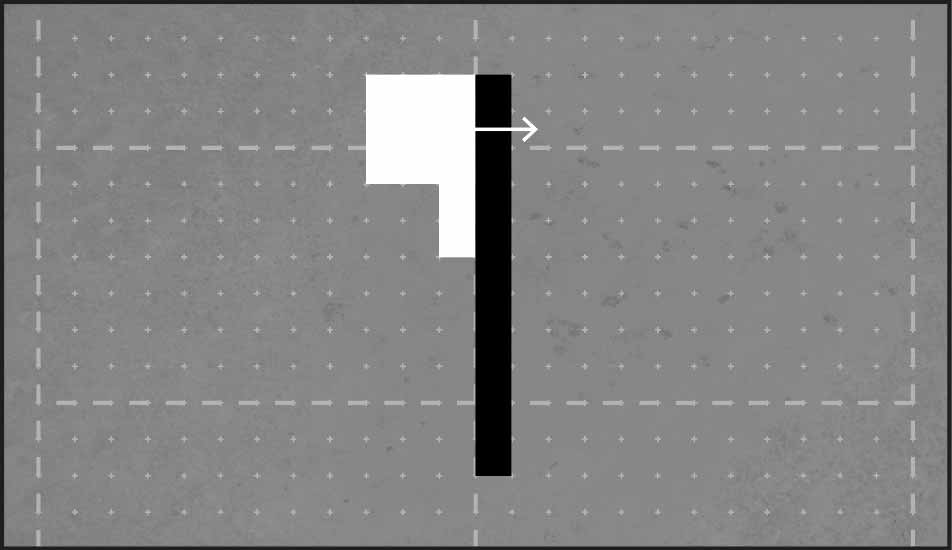
The downside of this tactic is that against an experienced coach it does not stand a great chance of working because the opponent can redeploy unengaged players to the point of attack. Then you will find yourself bottled up along the edge of the pitch. Being bottled up often means you cannot manoeuvre, and if you are immobile, then you are on the defensive.
INTERMEDIATE MANOEUVRES
Happily, a rookie’s manoeuvre as outlined above is not based on a bad understanding of the game and a more experienced coach can easily improve it by adding in depth. Through integrating a second layer of complexity to the manoeuvre, the opponent will find many of the defensive resources necessary to strengthen the point of attack are bogged down. On the opposite, a single threat strengthens the defense because its efforts to counter it are likely to be effective again in subsequent turns.
Let’s revisit the previous scenario. Two teams of perfectly equal strength face off. Now, visualize the team on defence set up across the line of scrimmage. In theory, it is possible to break this defence down by concentrating the bulk of one’s players on a single flank while some other players mark opposing players on the line.
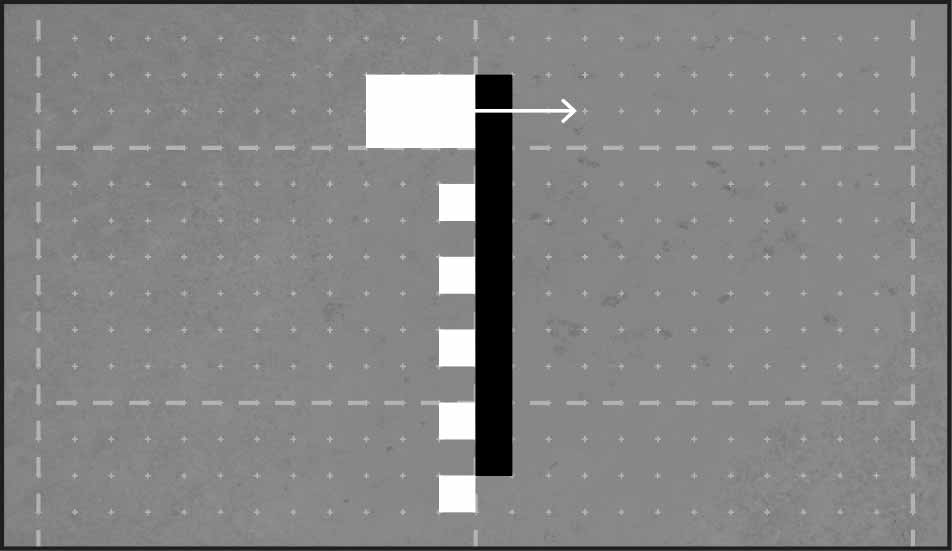
In Blood Bowl, offensive success often arises from a massive superiority of numbers in one key place. The idea is that this numerical advantage will create a disparity of force that will become a force multiplier in favor of the offense despite both teams having the same number of players on the pitch. To achieve this local numerical advantage – often on one flank – a coach must weaken a part of their offensive line. This weakened part of the line has a mission; pin down the maximum number of opponents possible, thus giving greater protection to the rest of the offense because, failing that, the defense only has to weaken its own line to strengthen the point of attack.
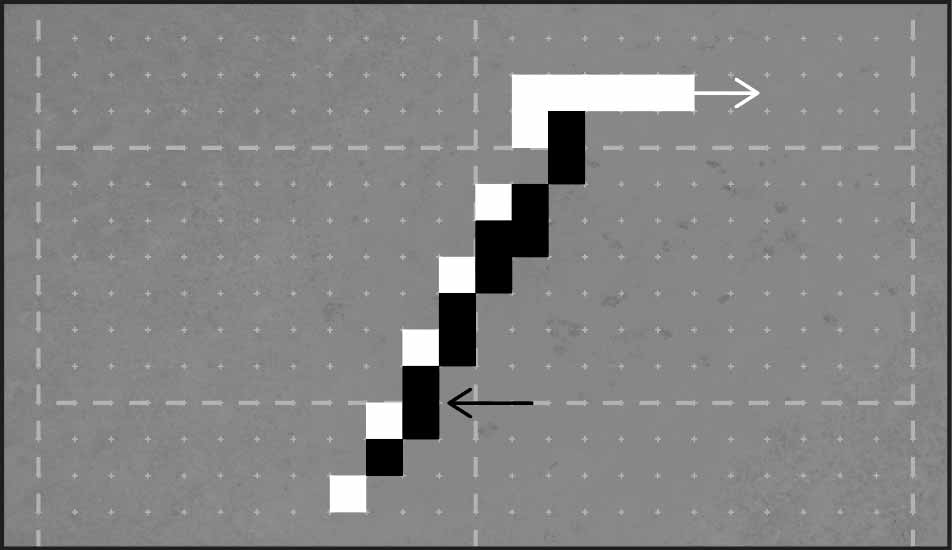
Following the opening turns, this manoeuvre can result in a diagonal disposition between the teams. The weakened offense away from the main offensive thrust is pushed back via POWs, Defender Stumbles, and Push Backs, whilst at the point of attack, the defense finds itself overwhelmed. Once the defensive line is penetrated, the offense can either score its touchdown if there is a need to rush or ride on its numerical superiority around the ball to hunt down opponents with a view to causing some casualties.
That said, there are dangers inherent in this type of tactical movement, particularly that the defense might re-seal the point of penetration with players held in reserve. This carries the risk that the offense might either again get bottled up in the wide zone or find itself under so much threat they have to score too quickly. Furthermore, this manoeuvre requires that the offense dedicate most of its resources to just one point of attack, making it difficult to readjust the offensive plan on the fly. Finally, this manoeuvre requires synchronism, meaning that if your adversary decides to create chaos either intentionally or by taking wild risks, it can prevent you from striking paydirt.
Let’s return to our scenario. Now imagine that the defense, in order to counter the threat of a concentrated offensive thrust, has placed its players across the pitch in five columns of two players, in such a way that the breadth of the defensive line is held by only one single player and his tackle zone.
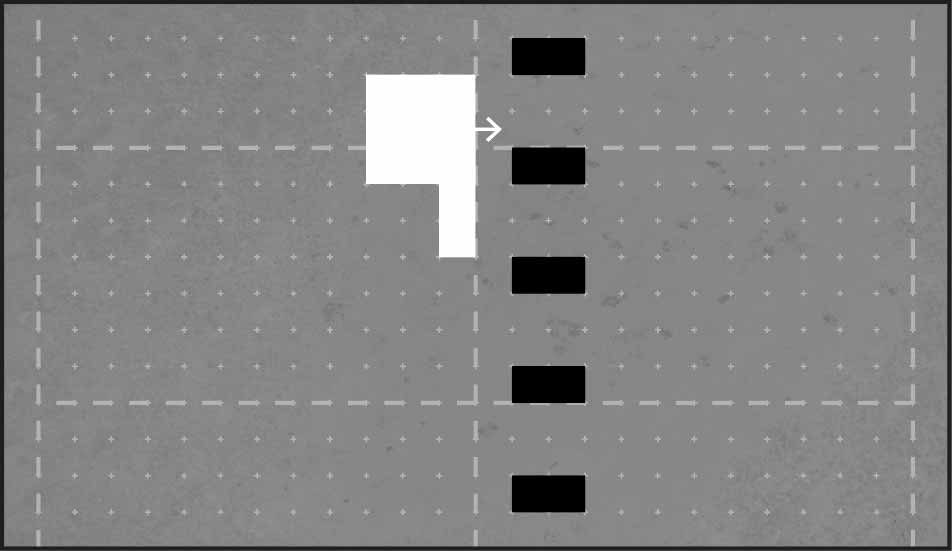
VETERAN Manoeuvres
In Blood Bowl, it is traditionally accepted that a defense set up in columns has the advantage vis-à-vis the offense, even if this latter concentrates all its eleven players to one single point of attack. In other words, five defenders covering the width of the pitch can stymie upwards of double their numbers of opponents given the equal breadth of their second row of teammates. Assuming that dodges and blocks do not generate turnovers or casualties, this type of defensive deployment has a decent chance of smothering all manner of offensive tactical movement.
Let’s continue with this scenario. The longer the above play carries on, the more the advantage shifts to the offense given that normal attrition will push the defense towards its breaking point. With the defenders having to sacrifice their ability to react in order to hold the line, the offence can now choose when and where to concentrate its best players in order to impose greater leverage than were they spread out across the pitch.
Champion Manoeuvres
Leveraging your best players’ strength and skill sets requires mobility in order to get these players exactly where they are needed most. Also, there is a minimum amount of strength required in order to be effective once the point of attack is selected. The idea is to use these elite players in successive actions against small groups of opponents rather than facing off against the entire strength of the defense in a grand sweeping attack. Successive actions result in hurdling one small risk after the other instead of gambling everything on one big risk.
All Or Nothing is not a sustainable approach to risk management across a series of games of Blood Bowl. It is not wise to play “heads or tails” with your destiny! Instead, a coach is better off creating a series of minor risks that are each easier to overcome via the manoeuvrability and concentration of their best players.
Such a concentration of the best players where they are needed most does not simply give your team better penetration and safer outcomes, it is also useful in exploiting your opponent’s tactical weaknesses (failed dodges, positional errors, an opportune casualty, etc.). By using this tactical movement to get your most effective hitting force driving into opposition weakness is your optimal scenario. Rinse and repeat.
EXAMPLES OF WEAKNESSES
- An initial set-up that is too spread out and not deep enough
- A set-up that is too weighted to both flanks
- A defense without mobile elite blitzers
- A defense with notable weakness in strength compared to the offense
- An opponent playing without re-rolls
- An improbable turnover
FAVOURABLE FACETS
- An offense that is more mobile than the defense’s ability to counter
- A more creative, efficient coach than the one on defense, able to solve the problems Blood Bowl inevitably throws up.
LEGENDARY Manoeuvres
Let’s bring our scenario to its conclusion. In that play above, no Legendary coach would want to be on the defensive, not without being forced into it. In fact, even on defense, such a coach would want to be on the offensive, pushing the opponent into fighting tooth and nail to keep not only the ball but the initiative. Creative plays arising from manoeuvres would be the order of the day.
For example, some Linemen could be positioned in a short column locking off part of the pitch while the bulk of the team manoeuvres to a point of attack on a wing. At the same time, some blockers could tie up key opponents so as to protect the thrust while elite blitzers could manoeuvre to infiltrate and exploit the opposition’s weaknesses.
CONCLUSION
Given this resulting new balance of power, other offensive considerations come into play to force a conclusion to the drive. For example, how much time is left in the game? … Do I score now or secure the ball and go hunting? Do I need to hold on tooth and nail for a draw? Does a draw do me nothing and only a win will see me lift the trophy? This is the point at which Blood Bowl becomes a manifestation of the coach’s play style because intentions, objectives, and in-game decisions usually come down to personal preferences … and there is something for all tastes!
